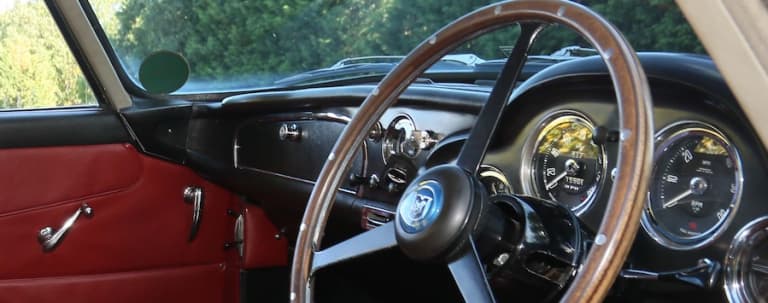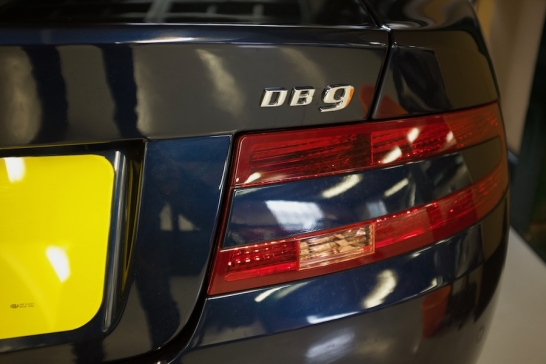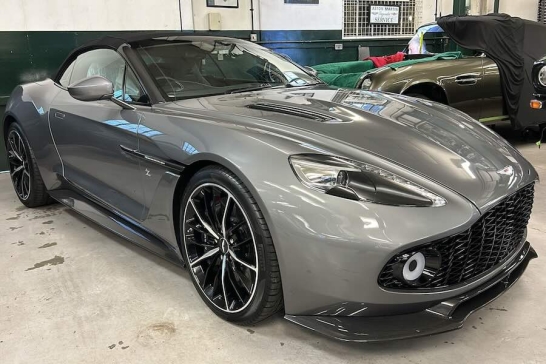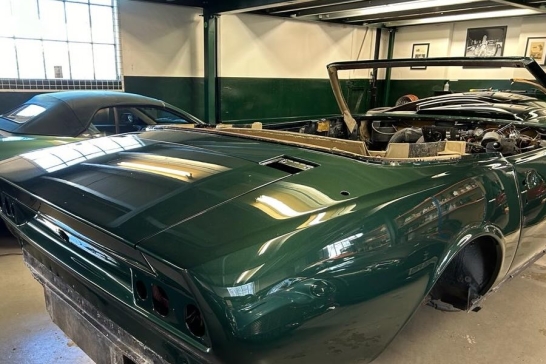Being simple, lightweight and nimble, a well-sorted DB4 is a joy to drive and holds a special place in the hearts of most classic Aston Martin enthusiasts, including Martin and Tim.
In fact, Tim owns an early DB4 and is quite clear that the car is a keeper, it’s not for sale. So what is it about the DB4 that makes it so lovely and so desirable?
Light, Nimble And A Lot of Fun
For starters, it’s worth noting that the Aston Martin DB4 has a smaller engine, 3.6L, than it’s successors, the DB5 and DB6 at 4.0L. However, it’s a lighter car meaning there’s not a lot of difference in performance, at least where acceleration is concerned. The lightness also means a well-sorted DB4 is fantastic to drive around twisty roads; it’s a real drivers car.
So before we explore why the guys at P&L love these cars so much, let’s take a quick look at their history.
It All Started In 1958
The first DB4’s appeared in 1958 and production continued until 1963. During that time 1,185 DB4’s were built, including 70 convertibles, plus 19 DB4 GT Zagato’s.
We’ve written about our love affair with DB4 Zagatos in another post, especially the work Pugsley & Lewis did on the DB4 GT Zagato Sanction II cars.
But enough of the rarified atmosphere inhabited by the Zagato version of the DB4, what is it about the standard versions we love so much?
No Frills, But That’s Part of the Charm
As the DB4 evolved, it did put on some weight and increase its wheelbase, but it didn’t lose its purity. For example, DB4’s didn’t have any of the creature comfort options offered by the later models such as power steering and electric windows. Now, that might seem like an odd thing to love about this car, but it’s that simplicity that makes it unique, at least to us.

To many people, including us, the way these cars look, especially the earlier series 1 and 2 cars is hard to beat. You could describe them as quintessentially British, with their stand up headlights as opposed to the faired-in lights of the DB5 and later DB4’s. Then there are the rear “church window lights” and the gorgeous little grill in the bonnet scoop. It’s no surprise that Tim describes the overall look of the DB4 as scrumptious.
It’s therefore surprising, for some people, that Carrozzeria Touring designed these very British looking cars in Milan. In fact, the DB4 was one of their final triumphs as they ceased trading only a few years later in 1966.
Let’s Talk About Torque
As mentioned earlier, the DB4 has a smaller engine size than the DB5 & DB6, although this is offset by DB4’s being lighter. Also, they have a twin carburettor setup as opposed to the three carbs used on the later cars. The end result of this, according to Tim, is a lot more torque, and this makes for a more relaxed drive. The DB4 is an effortless and enjoyable classic car to drive.
First-Hand Experience
Tim’s had a few DB4’s over the years starting with a basket case series 5 he bought and restored. Not long after finishing it, someone saw it and wanted it, so he sold it on and continued on his quest to find one of the earlier cars.
Then about 15 years ago he bought another very useable DB4 which, although he liked it, still wasn’t the one he wanted. He finally secured the DB4 he’d dreamed of by swapping a DB5 in need of restoration. Sometimes persistence is the name of the game where classic cars are concerned.
Did We Mention The Race Versions?
Of course, there’s another side to DB4’s that makes them even more special to many people, the stripped-down lightweight racing versions. These cars had racing suspension, stripped interiors, aluminium floor pans, 4.2L high compression engines with triple webbers and they were quick, very quick.
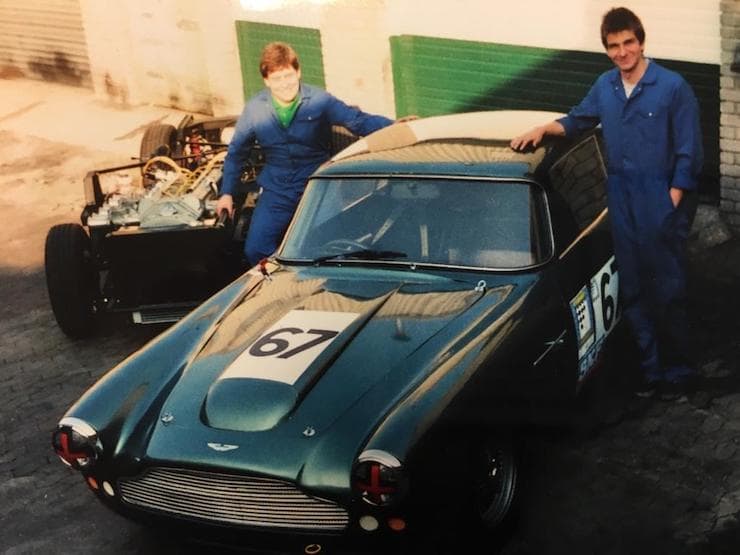
In the early days of Pugsley and Lewis Martin and Tim looked after several of these cars, and they were very successful on the classic car racing circuit. As Tim says, “They were very raw, you knew you’d driven one.”
These lightweight racing cars were created from standard DB4’s which back in the early ‘80s could be bought for around £2000! Turning them into lightweight racers increased their value and, gave their owners a boatload of high octane fun into the bargain.
So There You Have It
It’s easy to see why the Aston Martin DB4 holds a special place in the hearts of the team at P&L. Their purity, fantastic classic lines and versatility mean to many people they are the classic Aston to own. From the rarity of the Zagato to the adrenalin-inducing lightweight racers, what’s not to like about the classic Aston Martin DB4.
